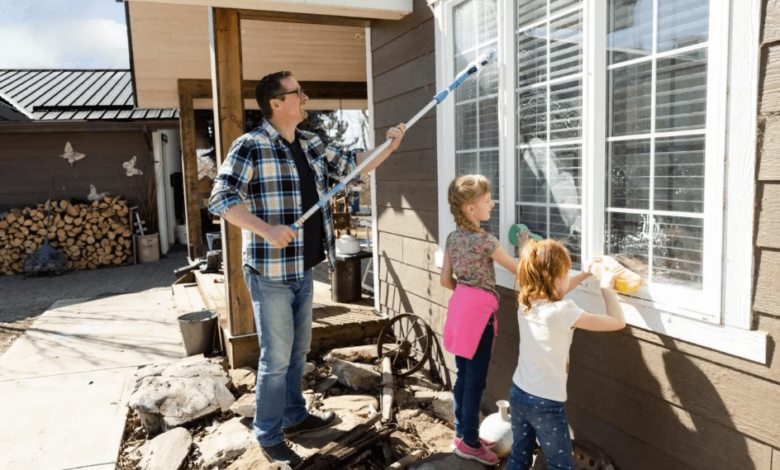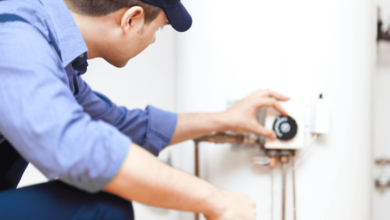Homeowner’s Checklist: Tips to Preserve Your Property

Owning a home is one of the most rewarding investments you’ll make. But with great rewards come great responsibilities. If you’re not actively maintaining your property, you risk costly repairs or a decline in value. Luckily, with a proactive approach, preserving your home can feel manageable and rewarding in the long run.
Keep Your Home on Track with Seasonal Maintenance Tasks
Every season brings unique challenges and opportunities for property upkeep. Tackling these tasks at the right time can save money and prevent minor issues from becoming significant problems. Use these tips as a seasonal game plan for home maintenance.
Spring
Spring cleaning isn’t just for decluttering! This season is all about prepping your home for warmer weather and addressing potential winter damage.
- Inspect your roof: Look for damage from winter storms, such as cracked shingles or leaks.
- Clean gutters and downspouts: Remove debris to ensure proper water drainage and prevent overflow or damage to your foundation.
- Service your HVAC system: Schedule maintenance to ensure your air conditioning is ready for summer.
- Check for pests: Warmer months attract critters, so inspect vulnerable areas like basements and attics before infestations arise.
Summer
The warmer months are perfect for tackling outdoor projects and preventative care.
- Power wash exterior surfaces: Refresh your siding, driveways, and patio furniture.
- Maintain landscaped areas: Trim overgrown trees and bushes to prevent interference with power lines or your roof.
- Test sprinklers: Ensure proper irrigation to avoid water wastage while maintaining lush lawns.
- Seal windows and doors: Check weatherstripping to keep your cooling efforts efficient.
See also: Kitchen Remodel Sacramento Ideas That Maximize Your Space
Autumn
Your property deserves thorough preparation for the windy and icy months ahead.
- Clear gutters (again!): Falling leaves build up fast, and clogged gutters can lead to water damage.
- Service heating equipment: Furnaces or boilers need to be ready for colder temperatures.
- Inspect and protect pipes: Insulation prevents freezing and bursting in frigid weather.
- Check weatherproofing: Ensure caulking around windows/doors is intact to minimize drafts.
Winter
Winter emphasizes protection and monitoring during harsh conditions.
- Shovel walkways: Prevent slips and falls by clearing snow regularly.
- Prevent ice dam formation: Keep your roof and gutters clear of snow and ice to avoid water damage.
- Inspect pipes: On extremely cold days, occasionally run water to prevent pipes from freezing.
- Test smoke and carbon monoxide detectors: This is especially critical as your heating system operates.
Key Areas to Prioritize in Property Maintenance
While seasonal tasks are important, a few key areas of your home require consistent attention regardless of the time of year.
Roof
Your roof is your home’s main defense against the elements, so keeping it in excellent condition is critical. Look for cracked shingles, sagging, or pooling water after storms. Address issues promptly to prevent leaks or structural damage.
Plumbing
Leaky faucets, slow drains, or fluctuating water pressure may seem like small annoyances, but they often signal larger plumbing problems. Regular inspections can help avoid costly water damage or pipe replacements.
If neglected too long, plumbing issues can escalate quickly. For example, a small leak may lead to mold growth or structural damage under sinks and in hidden areas.
HVAC System
Your heating, ventilation, and air conditioning system is the heart of your home’s comfort. Schedule professional checkups and cleaning each spring and fall. Replace air filters every 1–3 months for optimal airflow and efficiency.
Landscaping
A well-maintained yard not only boosts curb appeal but also prevents potential issues. Overgrown trees can damage roofs or cause disruptions to electrical lines. Keep an eye on tree roots as well; they can interfere with plumbing or foundations.
DIY Tips vs. Professional Services
Knowing when to roll up your sleeves and when to call in an expert will save you both time and money as a homeowner.
DIY Maintenance
DIY tasks are an excellent way to stay involved in the upkeep of your home, especially for simple maintenance jobs like these:
- Replacing air filters
- Cleaning gutters
- Power washing outdoor surfaces
- Painting touch-ups or fence maintenance
However, always adhere to safety precautions when using tools or handling unfamiliar tasks.
When to Call an Expert
Some jobs require equipment, expertise, and precision. For example, a licensed plumber should handle pipe replacements, and an HVAC specialist is essential for servicing your furnace. Additionally, consider bringing in a professional deep cleaning service, like those in Ogden, a few times a year. Industry-grade equipment can tackle years of buildup in ways standard cleaning supplies cannot.
Seeking professional help doesn’t mean you’re less capable; it simply ensures the work is done efficiently and thoroughly.
Planning for Repairs and Maintenance
Unlike life’s small surprises, property maintenance is relatively predictable. With careful financial planning, you can avoid repair stress and keep your home’s upkeep under control.
Create a Maintenance Budget
Set aside a portion of your budget specifically for routine home care. Experts recommend allocating 1-2% of your home’s purchase price annually for maintenance and repairs.
Build an Emergency Fund
Unexpected costs happen even with the best maintenance plans in place. High-priority systems like roofing or plumbing can fail suddenly. A robust emergency savings fund will help you handle these situations without financial strain.
Conclusion
Maintaining your home isn’t just about saving money in the present. It’s about protecting its value and safeguarding your living environment for the future. By following this checklist, from seasonal tasks to budgeting for big repairs, you can enjoy a safe, comfortable, and beautiful property year after year.




